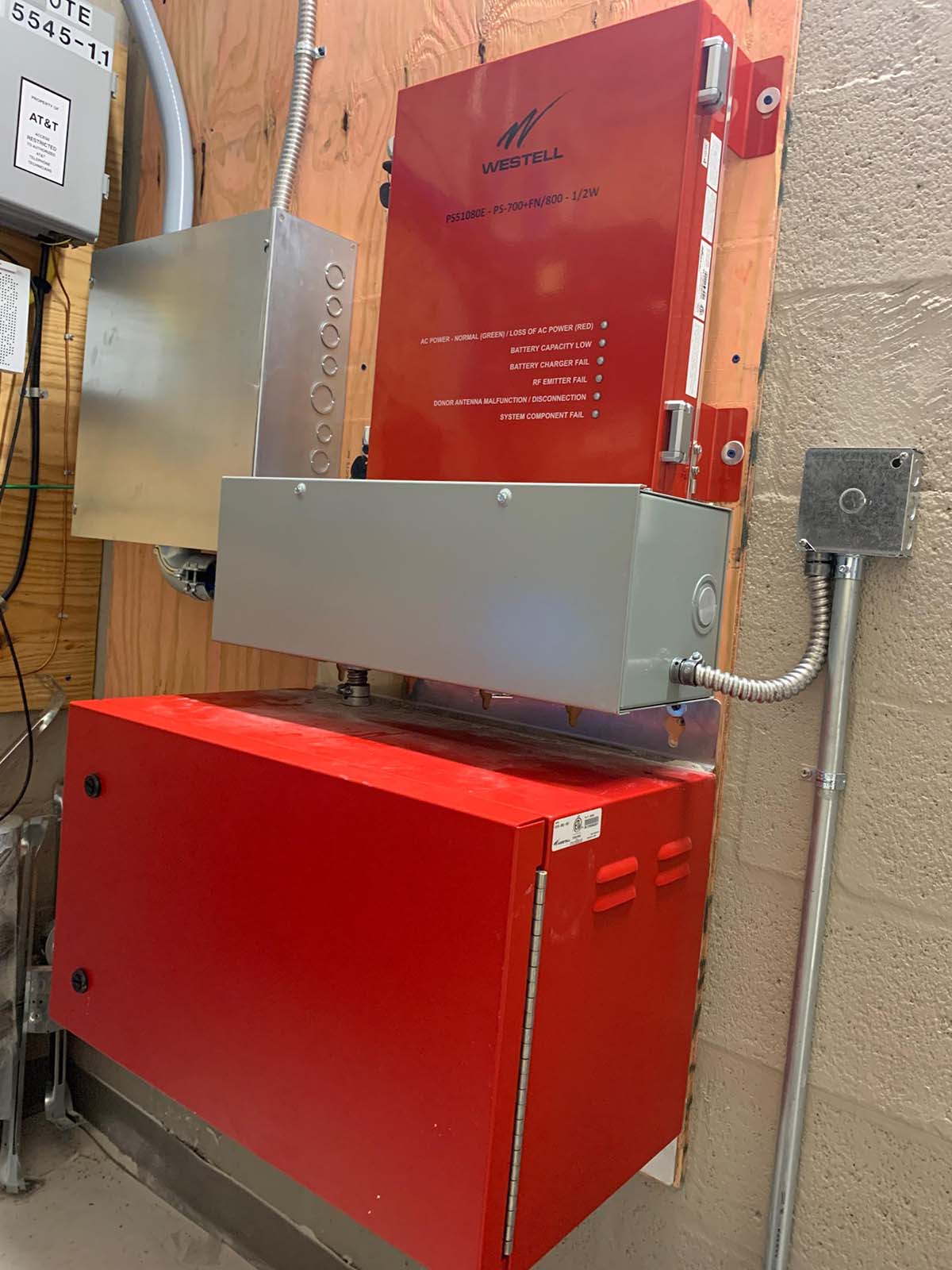Enhancing In-Building Safety: The Vital Role of Public Safety ERCES BDA DAS Systems
 In an age where urbanization is on the rise and buildings continue to reach unprecedented heights, ensuring the safety of occupants and first responders within these structures is paramount. Emergencies can strike anywhere, and in the event of a fire or other critical situation, every second counts. This is where Public Safety Emergency Responder Communication Enhancement Systems (ERCES) and Bi-Directional Amplifiers (BDA) DAS step in as crucial components in bolstering in-building safety measures.
In an age where urbanization is on the rise and buildings continue to reach unprecedented heights, ensuring the safety of occupants and first responders within these structures is paramount. Emergencies can strike anywhere, and in the event of a fire or other critical situation, every second counts. This is where Public Safety Emergency Responder Communication Enhancement Systems (ERCES) and Bi-Directional Amplifiers (BDA) DAS step in as crucial components in bolstering in-building safety measures.
Designing, installing, and commissioning these systems are not just standard procedures; they are fundamental pillars in fortifying the safety infrastructure of any building. Designing, installing, and commissioning these systems require expertise—a fact that was often overlooked just a few years ago. Back then, many contractors assumed they could handle the task, only to realize the repercussions of their inexperience through numerous lawsuits and system failures. In the early stages, building owners typically delegated the responsibility to their general contractors, who then passed it on to the onsite electrical contractors, often without the necessary qualifications. In some cases, the job was further subcontracted to individuals claiming proficiency without proper vetting. However, the landscape has shifted dramatically in recent years due to a series of mishaps and widespread confusion.
Importance of BDA DAS Design
Designing a Public Safety ERCES BDA DAS system isn't just about meeting basic requirements; it's about creating a comprehensive solution tailored to the specific needs and intricacies of the building in question. Every building possesses unique characteristics that can affect radio signal propagation, such as layout, materials used in construction, and surrounding environmental factors.
A meticulously crafted design takes into account these variables, ensuring compliant coverage throughout the building, including areas that may otherwise suffer from signal attenuation. Proper design minimizes dead zones, ensuring that emergency responders can communicate effectively from any location within the premises, even in the most challenging scenarios.
Installation and Commissioning of BDA DAS
Installation marks the transition from theory to practice, where the carefully crafted design comes to life. Precise installation of BDA DAS systems is critical for their effectiveness. Even the most advanced systems can falter if not installed correctly, leading to coverage gaps and compromised safety, and even interference with nearby buildings.
Commissioning serves as the final seal of approval, verifying that the system performs according to design specifications. It involves rigorous testing to ensure optimal functionality under various conditions. This meticulous process guarantees that when the need arises, emergency responders can rely on the system to facilitate swift and effective communication, potentially saving lives in the process.
Enhancing First Responder and Staff Safety
The significance of Public Safety ERCES BDA DAS systems in enhancing in-building safety cannot be overstated. These systems serve as lifelines, enabling clear communication between first responders and control centers during emergencies. By providing reliable coverage throughout the building, they empower firefighters, police officers, and other emergency personnel to coordinate rescue efforts efficiently, minimizing response times and maximizing effectiveness.
Moreover, these systems aren't solely for the benefit of first responders. They also play a crucial role in safeguarding the occupants of the building. In the event of an emergency, clear communication is vital for guiding occupants to safety and preventing panic-induced chaos. By ensuring that emergency instructions can be relayed effectively through first responders, Public Safety ERCES BDA DAS systems contribute to a safer environment for all.
Adherence to NFPA Standards and Fire Codes
The National Fire Protection Association (NFPA), state fire codes, and local AHJ's set forth standards and codes aimed at ensuring the safety of buildings and their occupants. Compliance with these standards is not optional; it's a legal and moral imperative. NFPA standards such as NFPA 72 - National Fire Alarm and Signaling Code, outline requirements for the design, installation, and maintenance of emergency communication systems, including Public Safety ERCES BDA DAS systems.
Meeting NFPA standards isn't just about regulatory compliance; it's about upholding a commitment to safety excellence. By adhering to these rigorous standards, building owners and managers demonstrate their dedication to creating a secure environment for all.
Integration with Fire Alarm Systems
Public Safety ERCES BDA DAS systems do not operate in isolation; they are integral components of a building's overall emergency communication infrastructure. Integration with fire alarm systems allows for communication and coordination between various safety systems, ensuring a synchronized response in the event of an emergency.
By interfacing with fire alarm systems, Public Safety ERCES BDA DAS systems can automatically activate in response to fire alarms, further enhancing the efficiency of emergency communication. This integration streamlines emergency response procedures, enabling a swift and coordinated reaction to unfolding situations.
Public Safety ERCES BDA DAS systems are indispensable tools in enhancing in-building safety for both first responders and occupants. Through meticulous design, installation, and commissioning, these systems ensure clear communication during emergencies, potentially saving lives in the process. By adhering to NFPA, state fire, and local AHJ standards, and integrating with fire alarm systems, buildings can enhance their overall safety infrastructure, providing a secure environment for all who inhabit them.
